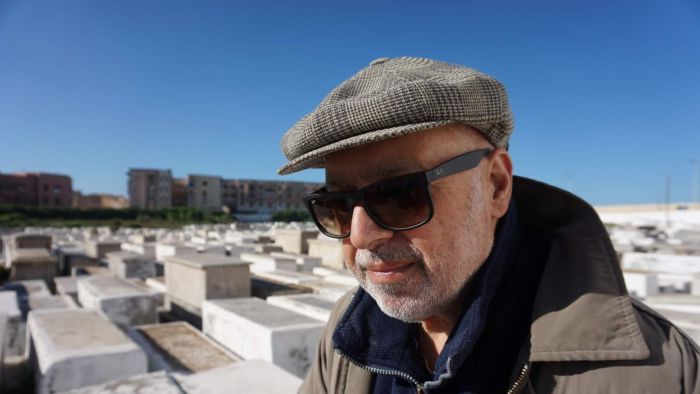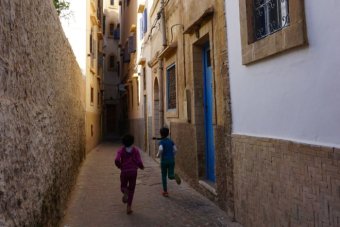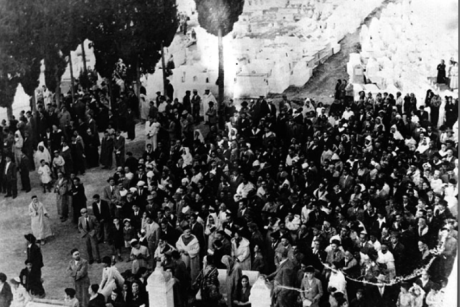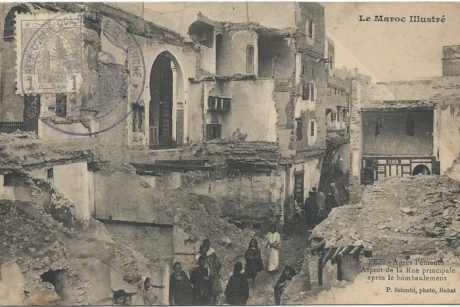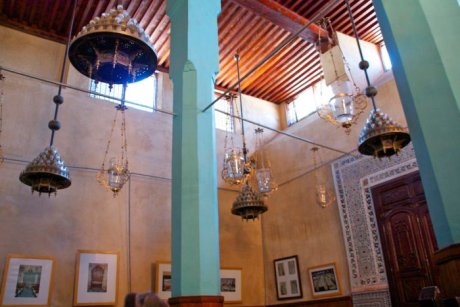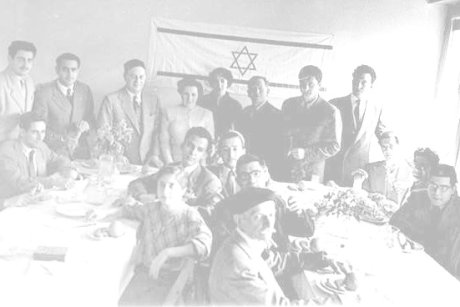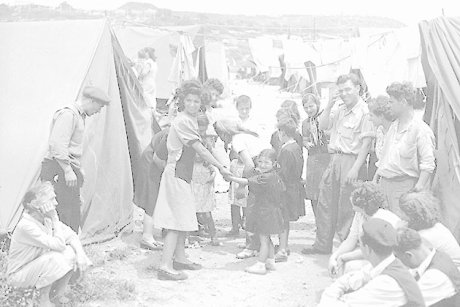ABC NEWS
RN By Joey Watson
and Claudia Taranto for Earshot
Joseph Sebag is the last Jewish man in the seaside Moroccan town of Essaouira.
In an antique shop in the seaside Moroccan town of Essaouira sits Joseph Sebag, a charming old man with a shy smile.
He is all that remains of the city’s once thriving Jewish community. But he remembers what it was like before the exodus.
“There was no Jew that didn’t have a Muslim friend, and there was no Muslim that didn’t have a Jewish friend,” Mr Sebag says.
Listen: The last Jew of Essaouira
Take a tour of the Moroccan town of Essaouira with the only Jewish man who still lives there.
Jewish merchants first arrived in Africa around 500 BC. In the centuries that followed, thousands of Jews fleeing persecution in Europe established new lives in Morocco.
For most of Morocco’s history, Jewish people lived in relative harmony with Muslims.
But when Israel was established in 1948 the friendship was severed beyond repair.
Tensions between Arabs and Jews, which had been stroked under French colonial rule, exploded into a terminal confrontation.
Arab nationalists expressed their solidarity with displaced Palestinians by turning on their Jewish neighbours.
In Morocco, as with much of the Arab world, many Jewish communities faced looting, arson, and riots.
“It was very sad, people that had lived there for hundreds of years all packed up and went,” Mr Sebag says.
Photo Jewish men praying the “Birkat Hahamma” (blessing of the sun) at the entrance of the Jewish Cemetery, Fez, Morocco 1953.
Beit Hatfutsot
The country was once home to more than 300,000 Jews, the largest Jewish population of any country in the Arab world. It now hosts only 5,000.
“Before the exodus the Jews in Morocco were everywhere, in the cities, in the small villages,” says Mechthild Gilzmer, a professor in Jewish studies at Saarland University.
“It was a large and vibrant community.”
‘The end of the exile’
Unlike the biblical exodus of ancient Jews from Egypt, the migration of Arab Jews in the 20th century was more like a slow divorce than an instant separation.
For more than 30 years before the creation of Israel, French colonists had been working to drive a wedge between Muslims and Jews in Morocco.
Education programs were rolled out encouraging Jews to embrace French culture and language. Classical Arabic was left off the curriculum in favour of Hebrew.
A symptom of disintegrating relations, looting and rioting broke out in Jewish Quarter of Fez in 1912.
Jews fled large cities to smaller towns and villages on the urban outskirts, creating Jewish ghettos reminiscent of 19th century Europe.
Photo Ruins of Mellah after the Fez pogrom of 1912
Beit Hatfutsot
In Morocco, some Jews left to seek the long-promised land, but many chose to stay despite the growing tide of anti-Semitism in some cities.
“Unlike elsewhere in the Arab world, the creation of Israel did not immediately spark widespread animosity or attacks on Jews [in Morocco],” Professor Gilzmer says.
Carrying the flag of the newly-established Arab League, the Moroccan nationalist press began fostering hostility against Jewish Moroccans. Many shops and homes were looted.
In the early weeks of June 1948 an anti-Jewish riot broke out in the north-eastern Moroccan towns of Oujda and Jerada. At least 44 people were killed.
After a long history of coexistence, “many Jews were made to feel like they were no longer welcome”, Professor Gilzmer says.
Photo Habarim Synagogue in Fez, Morocco is a testament to the country’s rich Jewish history
Flickr: Eatswords
After the violence in Oujda and Jereda, the stream of Jews making the journey across the Mediterranean became a flood. By 1950, 18,000 of Morocco’s Jews left for Israel.
Marc Cohen left Morocco 50 years ago, when he was 18. He now lives in Melbourne.
“I remember buses full of Jewish people not knowing where they were going,” he says.
“They started closing one synagogue after the other, most of my school friends left, and then everybody left.
“For many it was the end of the exile”.
Against a backdrop of rising Arab nationalism, European Zionists began arriving at Moroccan synagogues telling stories of the new Jewish homeland. They encouraged the local Jewish community to migrate.
Israel had sent dozens of Mossad officers to North Africa who acted as missionaries for the Zionist cause.
According to Professor Gilzmer, even when threats were minimal, “many Jews left after being told by Zionist agents they were in danger”.
Photo A party held by Zionist movement activists in Tetuan, Morocco in 1950
Beth Hatefutsoth
Transit camps, discrimination and DDT
Moroccans, who had encountered Zionism before immigrating to Israel, might have expected a warm welcome. Instead integration in the infant nation proved challenging.
Other than religious heritage, the Sephardic Jews of North Africa shared very little in common with European Jews, the founders of the Zionist project.
“There was a sense of Ashkenazi superiority, they felt the Zionist project had to be built up by European Jews,” Professor Gilzmer says.
“In the beginning when the poor Jews came from Morocco they faced many difficulties finding their place in that society. There were many stereotypes, and there are still today.”
Moroccans were the largest immigration group from Arab countries, about a quarter of a million people. This was more than double the size of Iraq, which was the second largest.
This posed a threat to the Israeli establishment who were afraid of changing the internal demographic balance between the Ashkenazi majority and the Sephardic minority.
Practically, Israel was not prepared for the influx of immigrants. There was no housing and the bulk of the migrating Arab Jews were forced into overcrowded transit camps.
Many immigrants were sprayed with the pesticide DDT to prevent the spread of trachoma. Later studies showed that the treatments led to serious side effects including seizures, infertility and cancer.
Photo Sephardic refugees at Ma’abarot transit camp, 1950
Wikipedia Commons
Although the trauma of the previous century still lingers, Sephardic Jews now occupy a substantial place in Israeli society.
In recognition of their plight, Israel commemorates the National Day Remembering the Jewish Exodus from Muslim Lands on November 29 each year.
Many of the descendents of Moroccan Jews living in Israel, who now number nearly 1 million, return to their ancestral home yearly.
For the 5,000 Jews in Morocco today the harmony that defined Jewish-Arab relations for centuries has largely been restored.
Mr Sebag, the last Jew of Essaouira, ruminates on the future.
“This heritage has been transmitted to their children and grandchildren, it is a heritage that will hopefully last forever,” he says.
Posted Tue at 11:00pm




